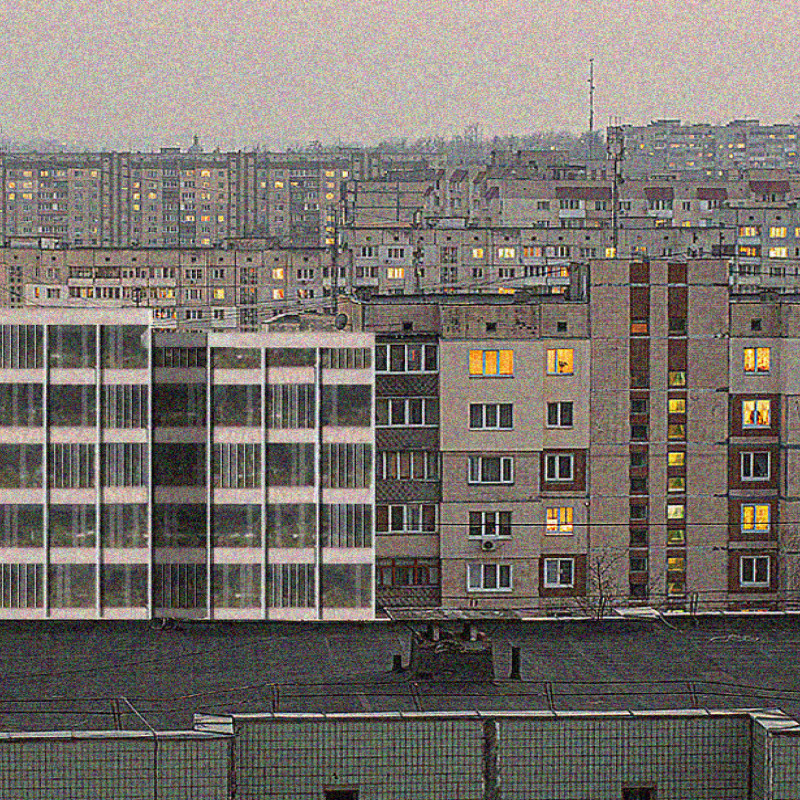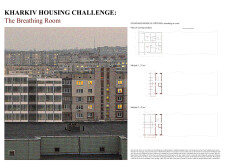5 key facts about this project
**Project Overview**
The "Breathing Room" project is situated in Kharkiv, Ukraine, and is designed to address the critical housing shortage resulting from ongoing conflict in the region. This initiative focuses on creating adaptable residential spaces that enhance livability within the existing urban fabric, promoting community engagement while maintaining sensitivity toward the architectural heritage of Kharkiv's brutalist structures. The project aims to provide functional housing solutions that serve both individual and collective needs, fostering a sense of belonging and resilience amid challenging circumstances.
**Spatial Configuration**
This initiative features two standard modular units—22 square meters and 45 square meters—designed to accommodate diverse family sizes and requirements. The configurations emphasize flexibility, allowing modules to be added, removed, or reconfigured according to the residents' evolving needs. The internal layout prioritizes the efficient use of space, incorporating essential amenities such as kitchens, living areas, and bathrooms. Open floor plans support social interaction, balancing the necessity for communal engagement with the need for privacy.
**Materiality and Construction Techniques**
The project incorporates a selection of materials designed for sustainability and performance. Cross-laminated timber (CLT) is utilized for its structural benefits and environmental advantages, while steel mesh serves both decorative and functional purposes. Gypsum board and expanded metal mesh enhance fire resistance, acoustic comfort, and aesthetic appeal, respectively, and are complemented by the durability of brick and steel for the building facade.
Construction methodologies are outlined in detail, focusing on robust wall assembly techniques that ensure moisture control, insulation, and structural integrity. The design also enables ease of modification, allowing for future reconfigurations. Innovative balcony designs cater to modern outdoor living needs while adhering to sustainable practices.
Overall, the "Breathing Room" project exemplifies a thoughtful integration of innovative architectural strategies within an existing urban context, promoting adaptability and community rebuilding efforts in Kharkiv.



















































